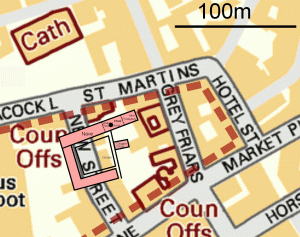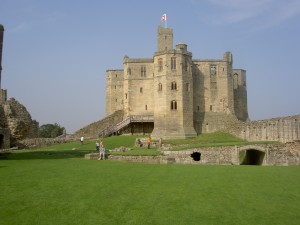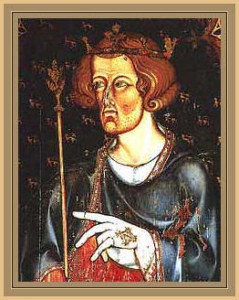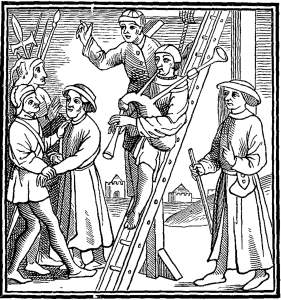
King Richard III by an unknown artist late 16th Century. Oil on panel on display in room 1 in the National Portrait Gallery
On Monday 4th February 2013 the Greyfriers skeleton which was exhumed several months earlier from a car park in Leicester was officially identified as that of Richard III King of England. Richard III had been buried in the small monastic community of Greyfriers in Leicester. It was known that Henry VII who defeated Richard at the Battle of Bosworth Field in 1485 paid £50 for a monument to be placed over Richards grave.
Local legend had it however that during the dissolution of the monasteries Richards body was exhumed and thrown into the River Soar while his coffin was sold to an Inn Keeper as a horse trough! Some locals however still believed that the body was buried in Leicester. The land once occupied by the Greyfriers Monastery was developed over the intervening years since the dissolution and is now Local Council offices.

The dotted brown line indicates the area identified in 1920 as the extent of the Greyfriars grounds. The University of Leicester 2012 dig positioned the Church, Chapter House, Cloisters and monastic buildings as the pink area shown, with a black dot indicating the location of the grave which contained the remains of Richard III.
Using old maps and previous work to identify the location of the monastery a team from Leicester University identified land suitable for excavation in 2012. Their plan was to dig a number of trenches and hopefully intersect a wall of the monastery. From this they could work out where the choir was which is where Richard was said to be buried.
Amazingly the first trench immediately unearthed two leg bones; these were part of the Greyfriers skeleton which was ultimately identified as the remains of Richard III! Continue reading



